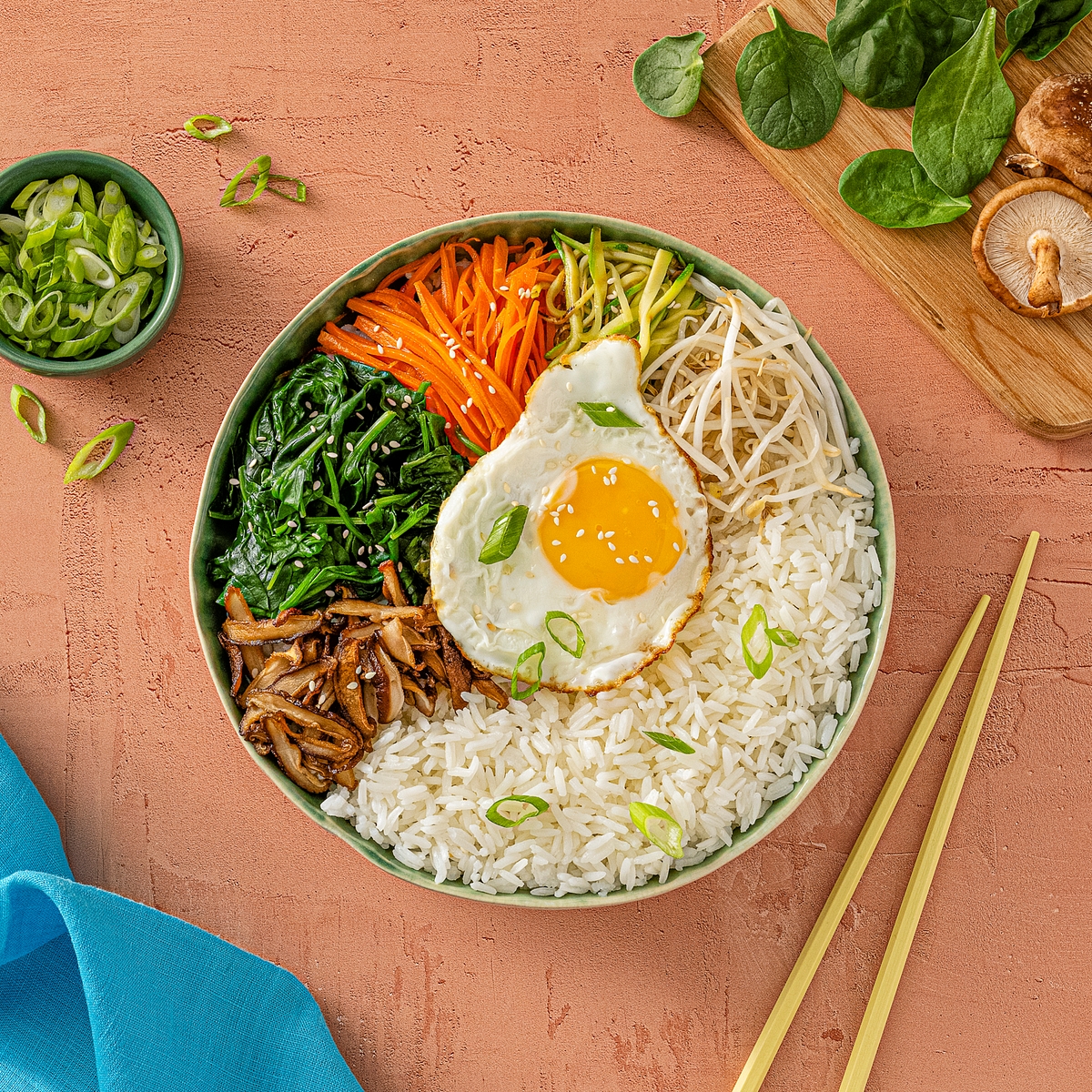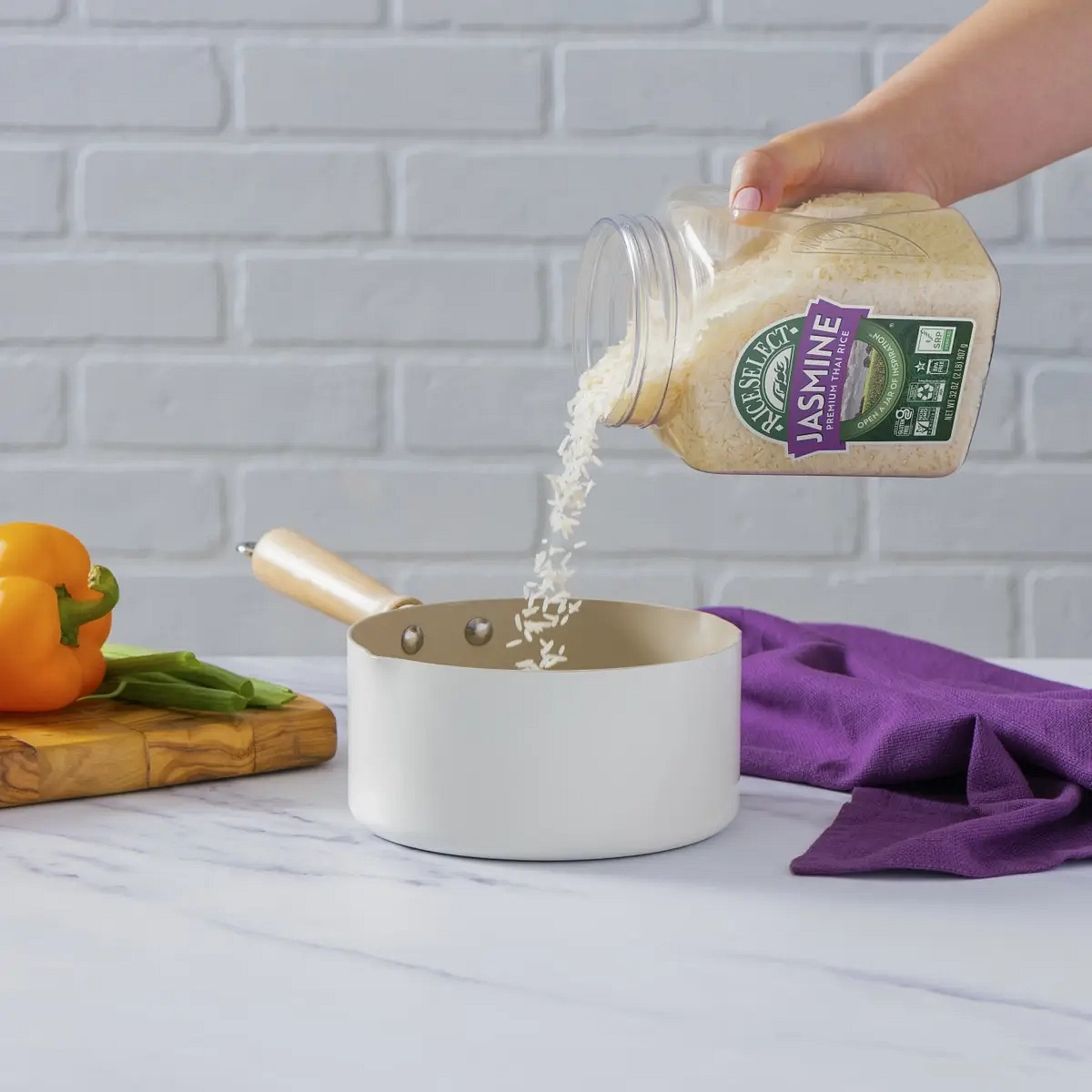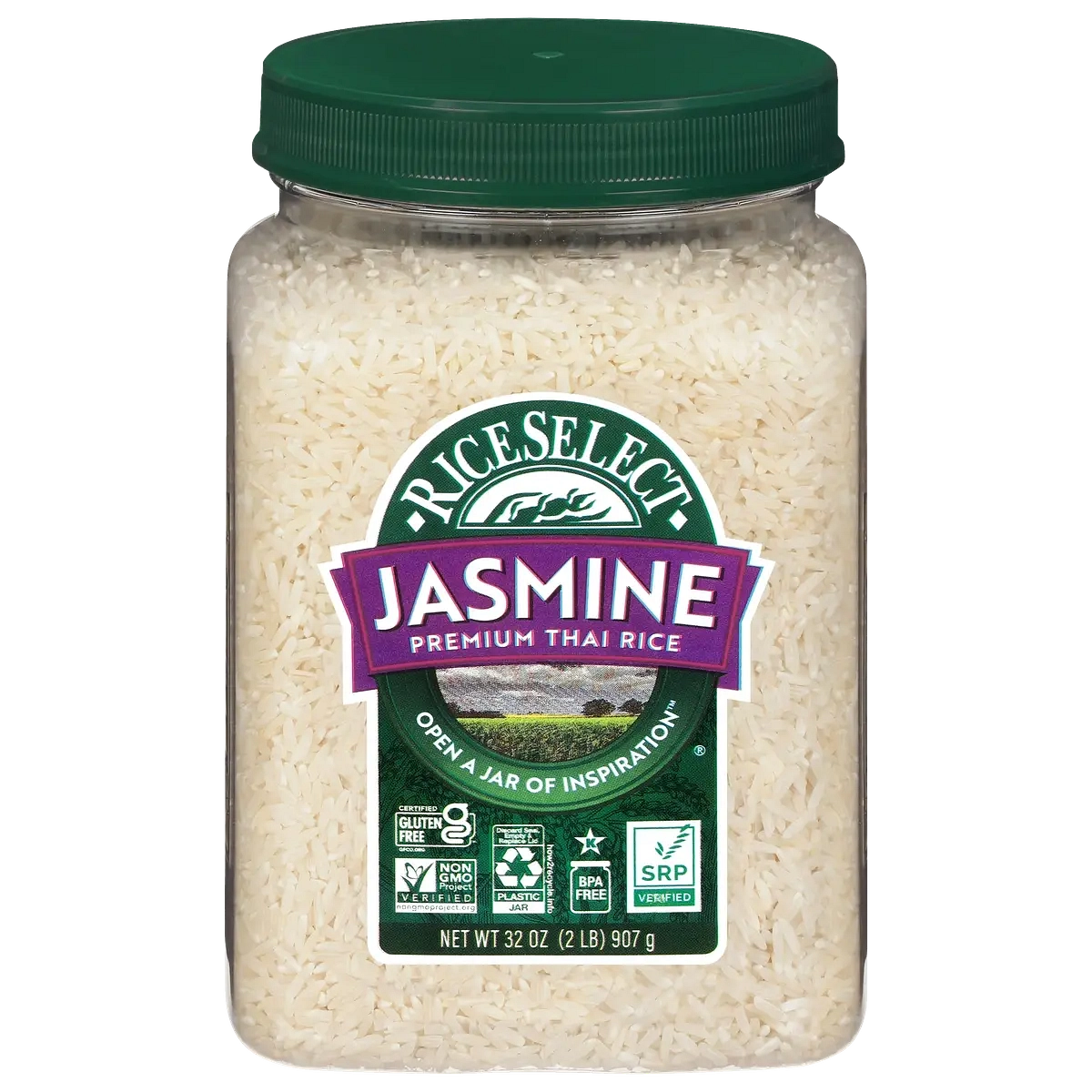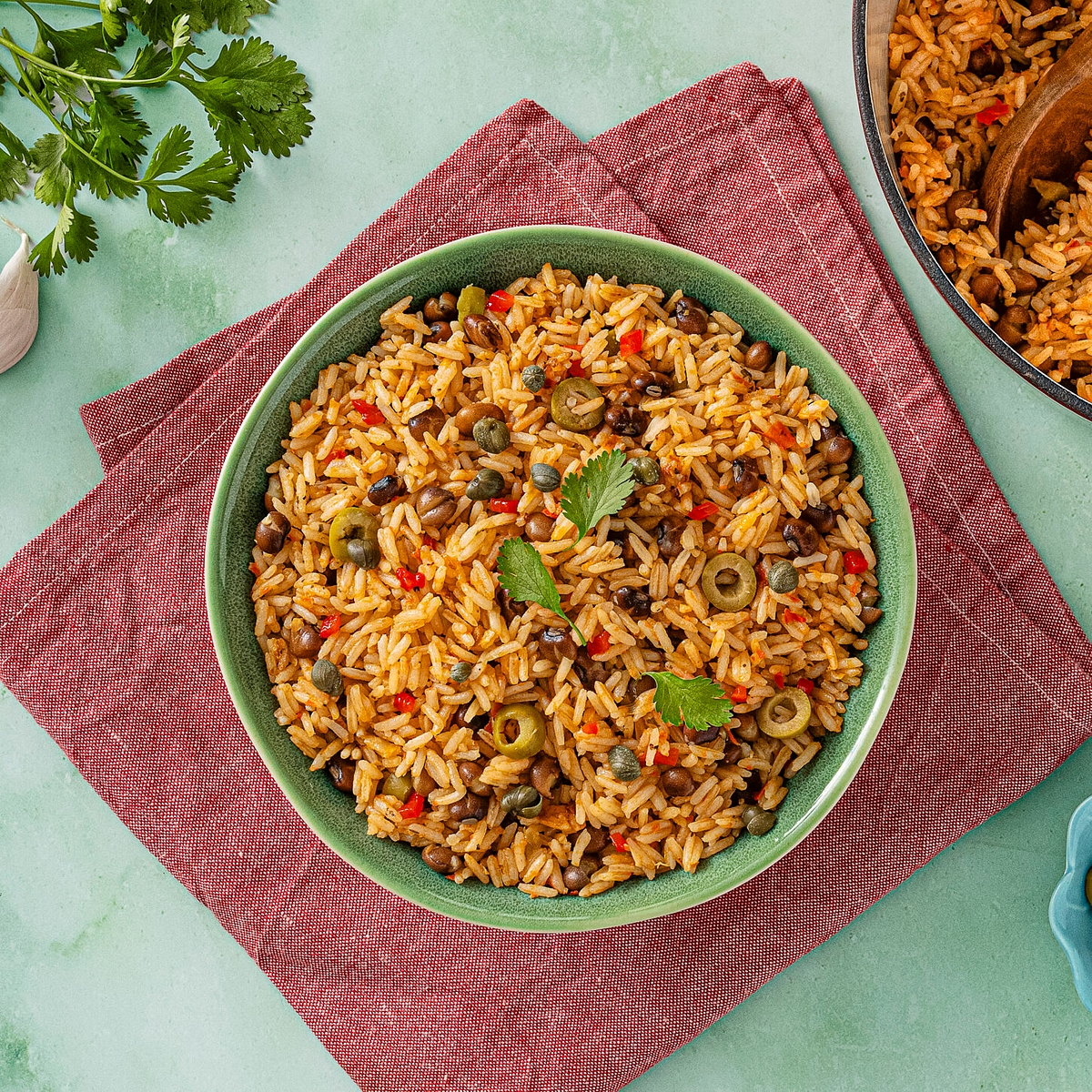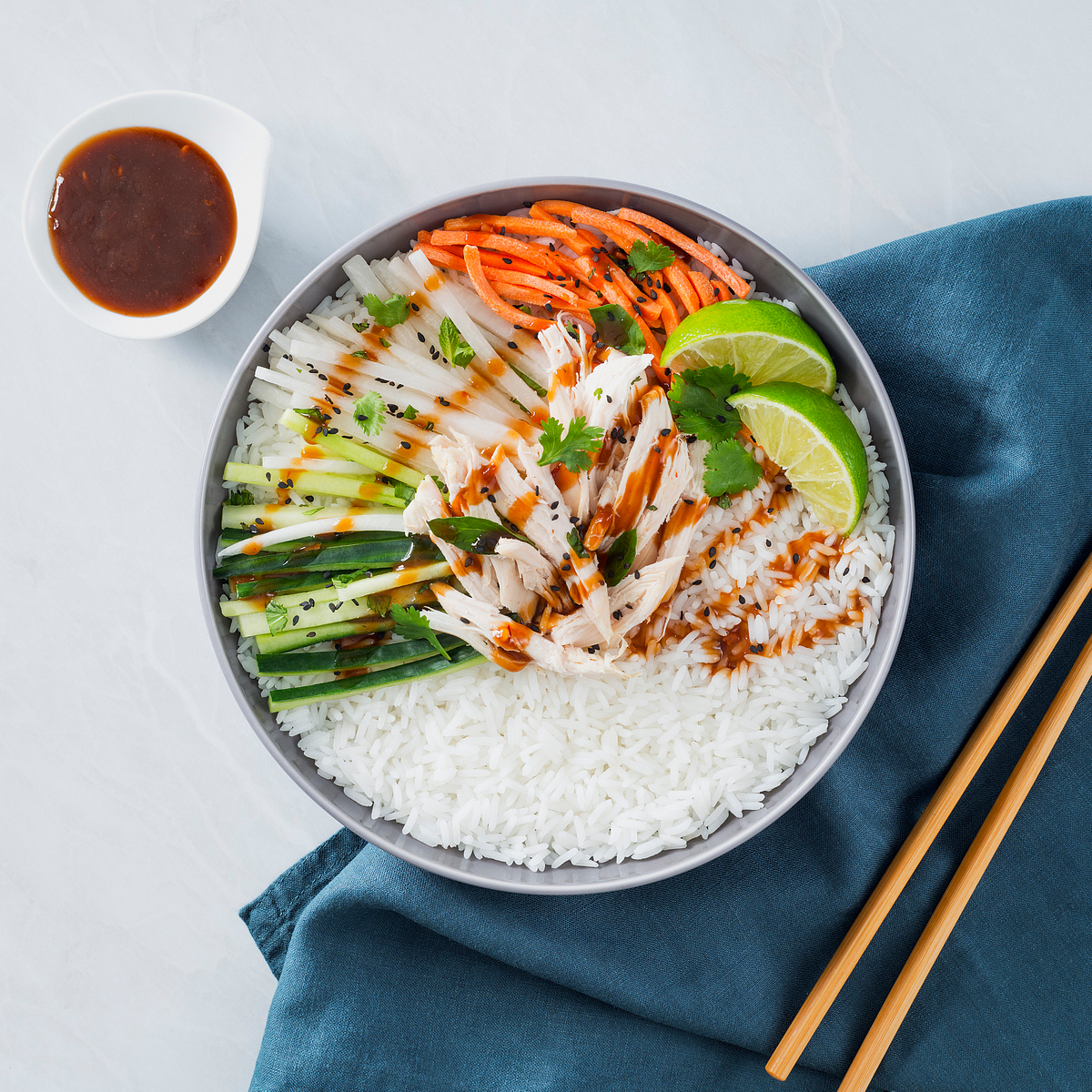If you dream of sitting down to exciting, creative and delicious meals, the first step is mastering the basics! Learning how to cook jasmine rice is simple but crucial if you long to make oodles of Southeast Asian curries, flavorful stir-fries, pilafs, puddings, sticky rice desserts, and more.
Aromatic, with long, slender grains, jasmine rice is popular around the globe. Native to Thailand, Laos, Cambodia and Vietnam, it is primarily associated with dishes from these countries. Still, thanks to its unique flavor and buttery fragrance, jasmine rice pairs beautifully with dishes from all over the world.
Read on to discover all that there is to love about jasmine rice, how to cook it, and how to make the most out of each and every grain.
Ideal Jasmine Rice-to-Water Ratio
If there’s a secret to making jasmine rice that’s fluffy, warm and tender, as opposed to squishy, crushed and unappetizing, it’s learning the correct rice-to-water ratio to use. Cook with too much water, and you end up with mush. Use too little, and your rice will be hard and inedible. For perfect jasmine rice, most cooks use a rice-to-water ratio of 1:1.5 (or 1 cup of rice for 1 3/4 cups of water). For slightly drier rice, use 1:1.25 (1 cup rice to 1 1/4 cups of water).
Does Jasmine Rice Need to be Rinsed or Soaked?
Many types of rice, such as basmati or brown, should be both rinsed and soaked to ensure they cook correctly. Since it is naturally slightly soft, however, jasmine rice doesn’t necessarily require these steps. If you do rinse and/or soak jasmine rice, you should take care to adjust the rice-to-water ratio for cooking.
- Rinsing removes the starch coating the outer layers of rice grains. Since jasmine rice is soft, it tends to absorb a bit of the water used to rinse it. If you rinse your jasmine rice in cold water, you should reduce the water you use to cook it by about 2 tablespoons. Most rice sold in supermarkets in the U.S. is pre-rinsed and doesn’t really require this step.
- If you rinse and soak your rice, you’ll want to decrease the cooking water even more to account for any water the grains have absorbed. In this case, reduce the water by 3 tablespoons (i.e., 1 1/2 cups water minus 3 tablespoons).
- When using jasmine rice to make sticky rice, you’ll want to adjust the rice-to-water ratios accordingly.
How to Cook Jasmine Rice
Whether you use a pot on the stove, the microwave or an Instant Pot, here are the steps and tips to keep in mind when cooking jasmine rice.
On the Stovetop
- To cook jasmine rice on the stovetop, you’ll need a measuring cup, a liquid measuring cup and a pot with a lid.
- For rice that is not rinsed, use 1 cup of jasmine rice for every 1 3/4 cups of water. You can season the rice at this step with 1/2 teaspoon of salt and 1 teaspoon of butter. If you rinse the rice, you’ll want to use 1 cup of jasmine rice and 1 1/2 cups, minus 2 tablespoons of water.
- Bring water to a boil. If using, stir in salt and butter. Stir in rice. Cover the pot with a lid, reduce heat to low, and simmer for 15 minutes. Remove rice from heat and let it stand for 5 minutes. Fluff rice with a fork and serve.
In a Rice Cooker
- To cook jasmine rice in a rice cooker, use the measuring cup provided with the appliance. Follow the manufacturer’s ratios for jasmine rice, filling the water to the water line marked on the side of the inner bowl. If none is marked for jasmine rice, use the 1:1.25 rice-to-water ratio.
- Add both the rice and water to the bowl, along with salt and butter, if desired. Cook the rice according to the manufacturer’s instructions. One cup of rice generally takes about 25 minutes to cook.
- Once cooked, allow the rice to rest for 5-10 minutes before fluffing with a fork.
In a Microwave
- To cook jasmine rice in a microwave, place 1 cup of rice and 1 1/2 cups of water in a large, microwave-safe bowl. Season with salt and butter, if desired. Microwave uncovered, on HIGH, for 8-10 minutes or until steam vents appear on the surface of the rice.
- At this point, cover the dish with a microwave-safe lid or with plastic wrap. Microwave for an additional 3-4 minutes on HIGH.
- Remove the bowl from the microwave and allow it to rest for 5 minutes. Taste the rice and, if not fully cooked, continue to microwave in 1-minute increments, until tender.
In an Instant Pot / Pressure Cooker
- Using the measuring cup provided with the appliance, add 1 cup of rice and 1 cup of water to the Instant Pot insert. Season with 1 teaspoon of salt and 1 teaspoon of butter, if desired.
- Secure the lid and lock. Select Pressure Cook for 3 minutes. When the timer goes off, allow the pressure to release for 10 minutes. Remove the lid, fluff the rice with a fork, and serve.
- When using a pressure cooker, use the same rice-to-water ratio as with the Instant Pot. Add the rice and water to the pressure cooker pot with salt and butter, if using. Secure the lid and cook on high for 3-5 minutes. Allow the pressure to release naturally for 10 minutes once the timer goes off.
Pro Tips for Cooking Fluffy, Fragrant Jasmine Rice
Now that you know how to cook jasmine rice, you’ll feel confident the next time it’s on the menu. Learn how to troubleshoot any issues you encounter with these tips:
- If your jasmine rice is soggy and soft, instead of perfectly fluffy and separate, you’ve likely cooked it with too much water. Always measure the rice and the water, using the appropriate measuring cup. Also, don’t forget to take rinsing and soaking into account when deciding how much water to use.
- Is your rice hard or undercooked? You can avoid these issues by increasing the cook time by a minute or two. It’s also important to ensure that the rice is simmering during cooking. If the heat is too high, it might burn or not cook properly. If the heat is too low, it will also be underdone.
- The texture of cooked jasmine rice depends largely on how much water is used to cook it. For slightly drier rice, use less water. For softer rice, use the maximum amount. If you still find your cooked rice a little dry, simply combine it with a little oil or butter, for moisture and added flavor.
- Though it’s tempting to lift the lid to check on your rice as it cooks, resist the urge! Lifting the lid during cooking allows crucial steam to escape. This can lead to undercooked grains.
- It’s also important to allow jasmine rice to rest once it’s finished cooking. With the lid on, leave it be for 5-10 minutes to allow it to finish cooking and to absorb any remaining moisture in the pot.
- It may seem unnecessary, but fluffing your rice with a fork or rice paddle is an essential step! Fluffing rice once it’s finished cooking helps to separate the grains and release any residual moisture.
- Though we love a fragrant bowl of plain jasmine rice, you can also season it as it cooks. Simple ways to season rice include cooking it in broth or coconut milk instead of water, adding spices (such as cinnamon, star anise, turmeric or cumin) to the water, toasting the grains in a little oil before adding the water, and sautéing onion and garlic in oil before adding the rice and water to the pot.
- Some recipes require rice that is sticky. Still, if you want to cook rice so that it’s not sticky, pay close attention to the rice-to-water ratio. You’ll also want to avoid rinsing and soaking the rice, as this can cause the rice to absorb excess moisture before it’s cooked. Cooking rice for the right amount of time can also help prevent sticky grains.
- How can you tell if jasmine rice is cooked? Sometimes, the best way to tell is to taste it! When perfectly cooked, jasmine rice is tender and subtly sweet with a buttery aroma. Rice that is too soft or crunchy is over or underdone.
Choosing the Right Jasmine Rice
For the best jasmine rice dishes, you’ll want to make every recipe with premium grains. Sustainably sourced from Thailand, RiceSelect® Premium Jasmine Rice is slender and delicate, with a distinctive aroma and unique taste. Ready in just 15 minutes, this fresh option adds authentic flair to any dish, from complicated projects to simple weeknight meals.
What Pairs Well with Jasmine Rice: Our Favorite Jasmine Rice Recipes
Arroz con Gandules
Proving that jasmine rice can play nicely with a world of flavors, this dish draws inspiration from Puerto Rico’s national dish. Punchy and bold, with depth from achiote and adobo seasoning, this jasmine rice dish is hearty enough to satisfy on its own but can also be paired with your favorite grilled protein.
Spicy Ahi Tuna Bowl with Spicy Pineapple Sauce
Seasoned jasmine rice, sriracha-spiked pineapple sauce, seared tuna and a jumble of vegetables add up to a striking meal in this light and lively recipe. Tropical and fresh as is, this dish is also easy to customize with your add-ons of choice.
Jasmine Rice Bowl with Flavored Hoisin Sauce
A jasmine rice recipe that’s simple and quick yet bursting with flavor, this loaded rice bowl never disappoints. Beyond the Vietnamese-style sauce, the flurry of crisp vegetables and herbs lend each bite a range of zippy flavors. Switch things up by adding grilled beef or seafood.
Korean Bibimbap Bowl
In this vegetarian take on classic bibimbap, a tangle of sautéed vegetables, sunny-side up eggs, tamari-laced finishing sauce and fluffy RiceSelect® Premium Jasmine Rice deliver countless mouthfuls of pure satisfaction.
Coconut Lime Rice Pudding
Creamy, tropical, fresh and sweet, this jasmine rice pudding is welcome breakfast, noon or night! Add in berries or tropical fruits — think mango, pineapple or bananas — to stretch out the number of servings and add more color to each bowl.

